- Home
- Learn
- Healthcare
- 7 Healthcare Workflow Automation to Improve Patient Care
HEALTHCARE
7 Healthcare Workflow Automation to Improve Patient Care
Contents
When the same old paperwork and manual operations eat up a huge chunk of the time spent by your healthcare staff, it is a marker that something needs to change.
You know the drill — processes like patient data collection, onboarding, prescribing, and billing dominate a healthcare organization’s daily operations. While essential, these tasks are efficiency drainers that offer little payoff for the time and effort you spend.
The growth in poorly designed digital health records and quality metrics has required that physicians spend more and more time on tasks that don’t directly benefit patients, contributing to a growing epidemic of physician burnout.
Ashish Jha, Veterans Administration physician and professor, Harvard Chan School.
As you can imagine, this problem binds not just physicians but administrative staff as well.
But things are changing for the better.
Thanks to technology, you can now automate the same healthcare workflows that once robbed your staff of precious time and energy.
For this reason and more, tools that offer workflow automation in healthcare are gaining their deserved popularity. In fact, according to a report, the healthcare industry avoided $193 billion in costs through automation in 2023, with the potential of saving another $18.3 billion through further automation.
In this article, we’ll see how you can use the same automation tools to iron out the wrinkles in your operations and, by doing so, help grow your healthcare enterprise the way you envision it.
As we touched on earlier, it’s the use of technology to automate and streamline the countless workflows your healthcare organization manages daily — which includes everything from scheduling appointments to managing patient records, staff rosters, activities, billing, healthcare insurance, and more.
In a nutshell, the aim is to automate the repetitive — to get things done faster, with less effort and fewer errors than manual processes typically cause.
Automation has taken over several domains of healthcare operations. Here are a few types of tools that are commonly used.
A healthcare CRM (customer relationship management system) helps organizations keep track of patient communication and outreach — not just clinical data, but all the touchpoints that happen around care: appointment history, follow-up messages, referrals, feedback, and more.
Used well, a CRM can automate parts of this process. It might be able to automate patient intake, send reminders based on visit history, trigger follow-ups after a procedure, or flag patients who haven’t been seen in a while. Some systems also help track referral patterns, marketing campaigns, or population health outreach.
Standard tools like texts and email aren’t built for handling patient data — they’re fast, but not secure. Messaging platforms designed for healthcare solve that by encrypting messages and keeping organizations compliant with HIPAA regulations.
They can be used by staff to coordinate care or flag issues — but many also support two-way messaging with patients – which means patients can reply directly, and in doing so, reduce phone calls and help surface concerns earlier.
Some platforms also integrate with EHRs/EMRs, route messages to the right person, and confirm when a message’s been read. These details add up to clearer and faster communication in healthcare settings.
Most healthcare systems rely on several disconnected tools — one for scheduling, another for lab results, and yet another for patient communication. When these systems don’t talk to each other, information gets stuck or repeated, and people end up doing manual work to keep things moving.
EHR integration tools help connect these systems. That might mean syncing a lab platform so results appear in the patient chart automatically or linking with a healthcare CRM so staff can see communication history alongside clinical data.
Several tasks like checking in a patient or insurance verification follow the same steps every time. Automation bots are built to handle these kinds of repeatable workflows without needing constant oversight.
Workflow engines can also coordinate larger processes, like routing a referral through the right approvals or updating multiple systems when a patient’s status changes.
This also helps standardize how things get done, which reduces mistakes and makes training easier.
Patient engagement tools help keep patients involved in their care before, during, and after a visit. They’re often used to send appointment reminders, share pre-visit instructions, collect intake forms, or check in with the patient after a procedure.
Some apps also let patients ask questions, confirm details, or reschedule without calling the office. That cuts down on phone traffic and helps prevent no-shows or confusion.
For clinics, the benefit is twofold: patients are more informed and prepared, and front-desk teams spend less time chasing information or managing last-minute changes.
AI and machine learning are most useful in places where there’s too much data for people to sort through efficiently — like diagnostic images, clinical notes, or large sets of patient records. These systems can flag patterns, prioritize what needs attention, or suggest next steps based on past cases.
They also support administrative work: forecasting supply needs, spotting billing issues, helping optimize schedules, or sorting claims into the right categories.
These tools are ideal for repetitive, data-intensive tasks, where speed and accuracy are critical.
The benefits of automation in healthcare are manifold. Let’s have a quick look at some of them.
In healthcare, even a small mistake can lead to dire consequences. Patient data entered manually always bears the risk of human error. Automation eliminates this risk by ensuring data is uploaded accurately, leaving no room for errors.
Proper communication between healthcare providers and patients leads to better outcomes. Automation helps ensure this is done by offering patients timely, reliable updates.
Take appointment no-shows, for instance. Many patients miss appointments simply because they forget. By sending automated reminders ahead of time, you can reduce no-shows, hence saving both time and money lost from missed medical appointments.
Automation improves a healthcare organization’s operational efficiency in ways that traditional methods can’t match, Automation improves a healthcare organization’s operational efficiency in ways that traditional methods can’t match, directly contributing to cost reduction.
To sum up, cost savings result from the broad capabilities of workflow automation in healthcare.
Patient data in healthcare is vital for delivering proper care. However, retrieving this data becomes tougher if stored physically and manually. With automation, you can manage and analyze large amounts of data on the go, which can then inform healthcare professionals in their decision-making by offering them valuable insights. Moreover, you can access the data instantly whenever it’s needed.
Healthcare workflow automation can strengthen both security and compliance. By handling tasks like data management, it reduces human errors that can lead to breaches. Every action is logged automatically, ensuring compliance with regulations in healthcare like HIPAA. Built-in security features and alert options in automation tools help prevent unauthorized access. In essence, automation protects sensitive data and keeps you on the right side of regulatory requirements.
Efficient care demands clear, timely communication. But in many healthcare settings, updates still move through slow or informal channels like phone calls, or in-person messages passed between shifts.
This leaves too much room for delays and confusion.
Secure messaging platforms for healthcare help you automate communication. With them, staff can send quick updates without stepping away from their work, and everything is documented as it happens.
These tools can also be connected to core systems like the EHR or CRMs to reduce double entries, bring context into conversations, and ensure important updates are tied directly to patient records.
Security is built in, adhering to regulations like HIPAA. So staff don’t have to stop and think about whether the platform is appropriate for sensitive updates.
Healthcare teams rarely stay the same for long. People get promoted, move departments, or leave the organization altogether. Research shows that nearly one in three new hires in healthcare exits within the first year, contributing to over 40% of total workforce turnover in the industry.
This constant change bought about by employees quitting and the need to hire replacements makes managing who has access to sensitive data tricky.
Automation helps take some of that weight off your shoulders.
With automated access controls, permissions update automatically as people change roles or leave the organization. You can also see who accessed what, when, and why. This makes it easier to spot issues and keeps you ready for audits.
Everything adds to patient satisfaction — be it shorter wait times, simple onboarding, or a smooth patient discharge. Keeping such processes quick and straightforward is essential to keep patients happy. With workflow automation, you can improve patient experience in this regard. For instance, implementing automation to collect feedback will provide faster insights into what patients liked or disliked about the care delivered. An automated scheduling system allows patients to book appointments quickly. Moreover, tracking patient appointment cancellations and confirmations reduces hospital wait time.
Automation helps you make the most of your marketing efforts by giving you deep insights into patient behaviors and preferences through real-time reports. With this data, you can craft campaigns that deliver the right message to the right audience at the right time. Automated tracking and analytics also let you measure which campaigns are driving the best results. This means you can focus on what works, refine what doesn’t, and make smarter, data-driven decisions to improve ROI.
It is now easier to stay in touch with your patients and keep them engaged, thanks to automation. For instance, you can use date-based triggers to send reminders for recurring events like annual health checkups. This ensures patients don’t forget about their appointments in their busy lives. Also, even small gestures like automated birthday wishes can strengthen your relationship with the patient. So, through consistent communication with automation, you improve the chances of them returning to your practice for future treatments.
Without further ado, here are 7 examples of workflow automation in healthcare that your healthcare organization could benefit from.
Patients are more likely to choose a healthcare provider that offers better online access to book, modify, or cancel appointments — simply because it’s more convenient.
An online appointment booking system can help you automate the process. There are several ways to implement this:
With online portals, patients can book appointments themselves. They need zero staff assistance- saving time for both patients and staff. Additionally, offering multiple appointments booking channels helps increase patient intake — meaning, an increase in revenue.
Here’s an example of a workflow automation you can implement.
The process of admitting or discharging a patient can be lengthy and frustrating, both for the patient and the healthcare provider, since the processes involve a lot of paperwork. So, collecting information through manual forms before a consultation costs you your precious time, which can then cause long wait times for other patients in queue.
According to studies:
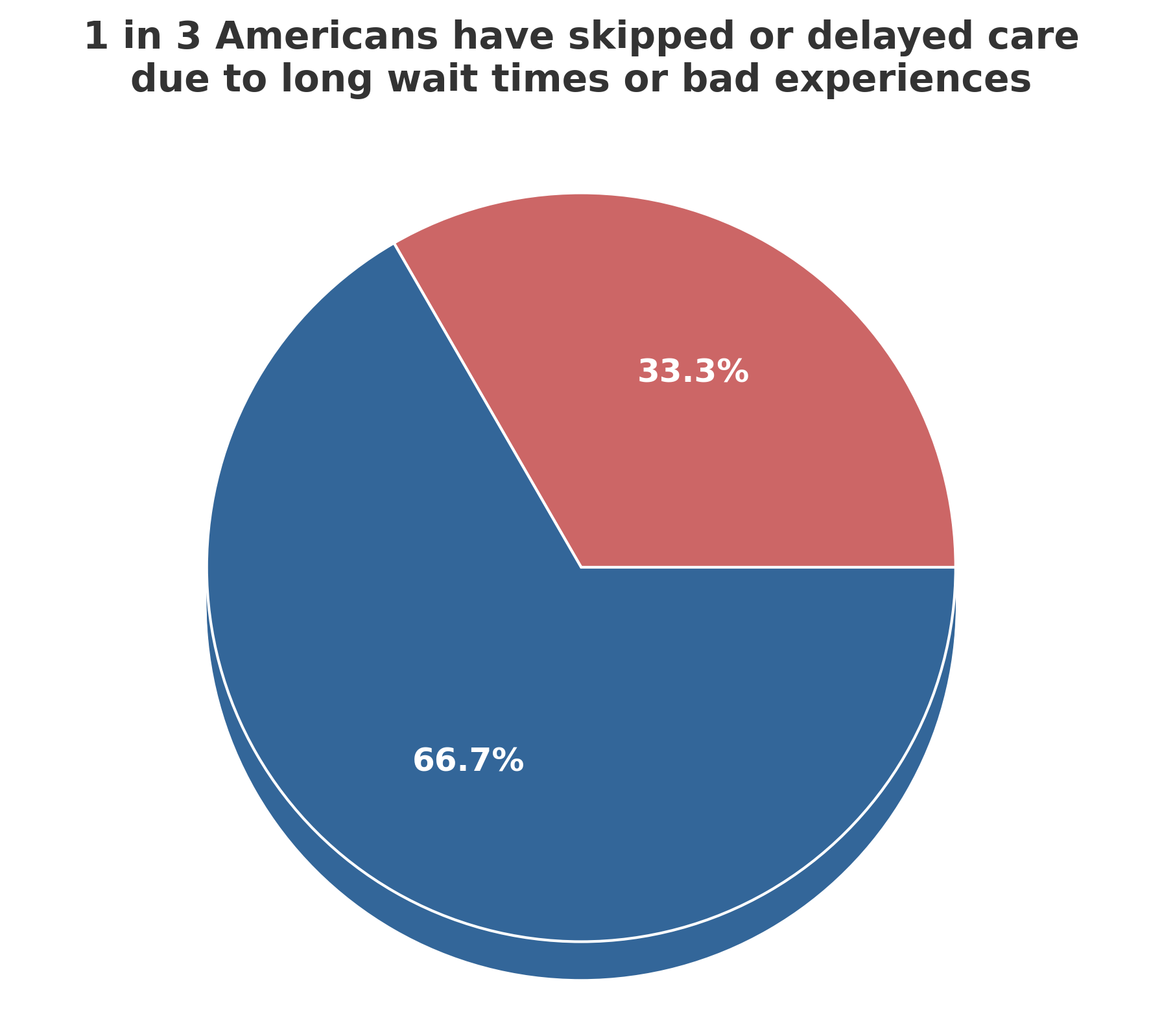
Doctors and staff also spend a lot of time collecting information. Since they do it manually and have no records for the next appointment, the same process gets repeated.
At the same time, discharge billing is a time-consuming task in itself. The longer the patient stays at your facility, the longer the billing process will take.
Approvals also increase discharge time, as the processes involved get entangled between multiple departments.
However, with functions like e-signature capabilities that come with automation, patient admission and discharge processes can be accelerated.
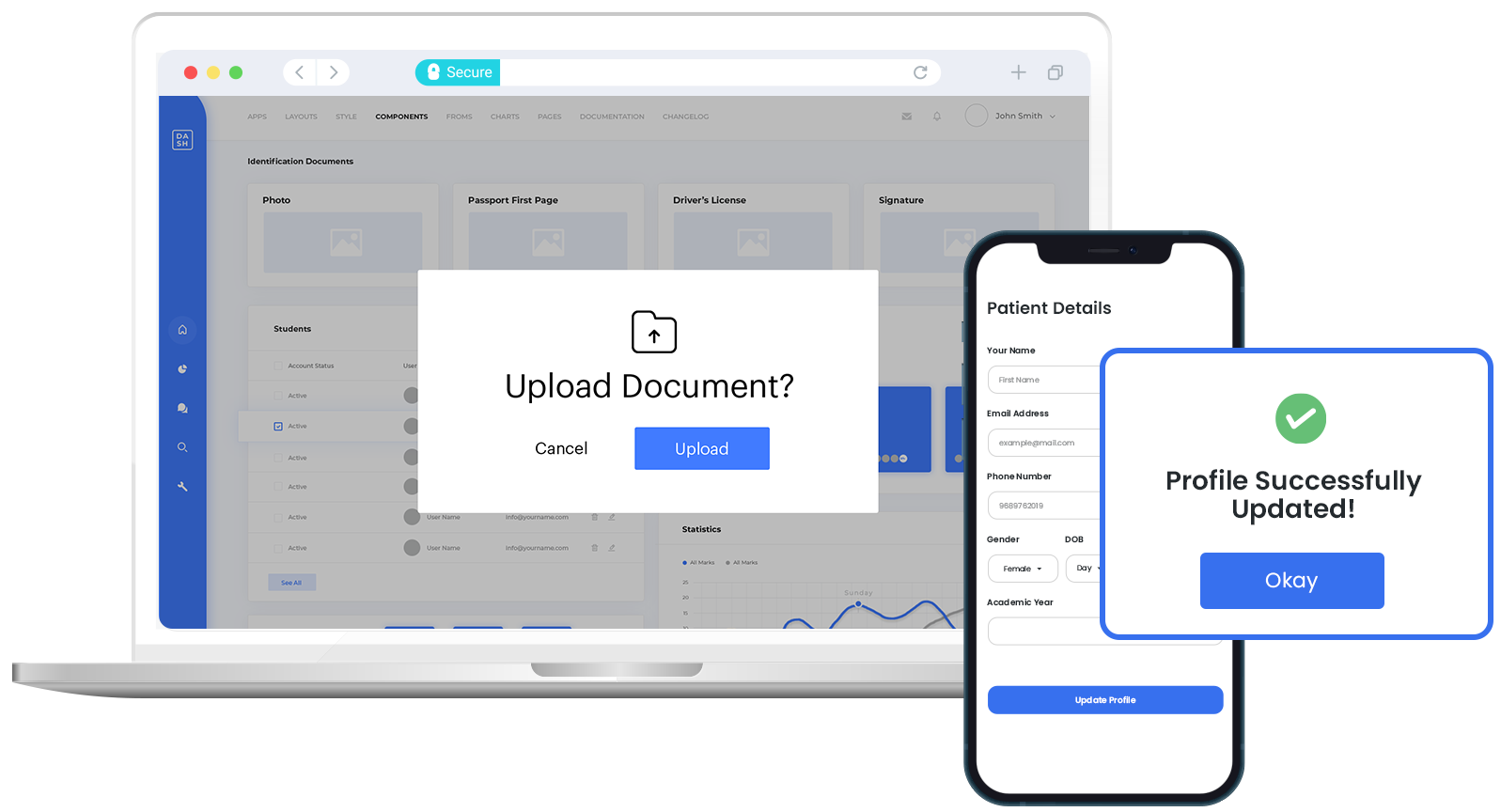
An efficient admission and discharge process is key to improving patient experience. Automation will save your staff from the manual work of filling out forms, creating bills, and getting approvals while reducing the chances of errors.
As we discussed earlier, the risk of errors is undeniable when healthcare providers manually enter important information into their electronic health records (EHR). A small error while entering data can lead to mistakes in the patient’s diagnosis. In worst-case scenarios, it can lead to the patient getting the wrong treatment.
Along with an EHR, a healthcare organization’s workflow might benefit from automation. For instance, there is no potential for errors if your hospital automates the procedure across medical test labs and integrates the EHR platform. You can automatically transfer lab reports and other information into an EHR using automation software. This aids doctors in accurately diagnosing patients’ conditions and prescribing the right course of treatment.
Automating health record management reduces human errors. So, you don’t have to think twice about potential mistakes as you take care of your patients.
When selecting healthcare providers, 83% of patients consider the availability of digital communication channels to be a key factor.
Patients communicate with their healthcare provider at many stages of their healthcare journey. You can automate these interactions by installing bots to answer booking queries and help them secure appointments. You can also integrate the automation system with your IVR to resolve general questions while only passing the more nuanced ones to your staff.
Along with that, you can also automate reminders for upcoming appointments and for taking medications post-consultations. Automation can also help you improve patient engagement by using call reminders, email automation, and text messages to share self-care tips and treatment options.
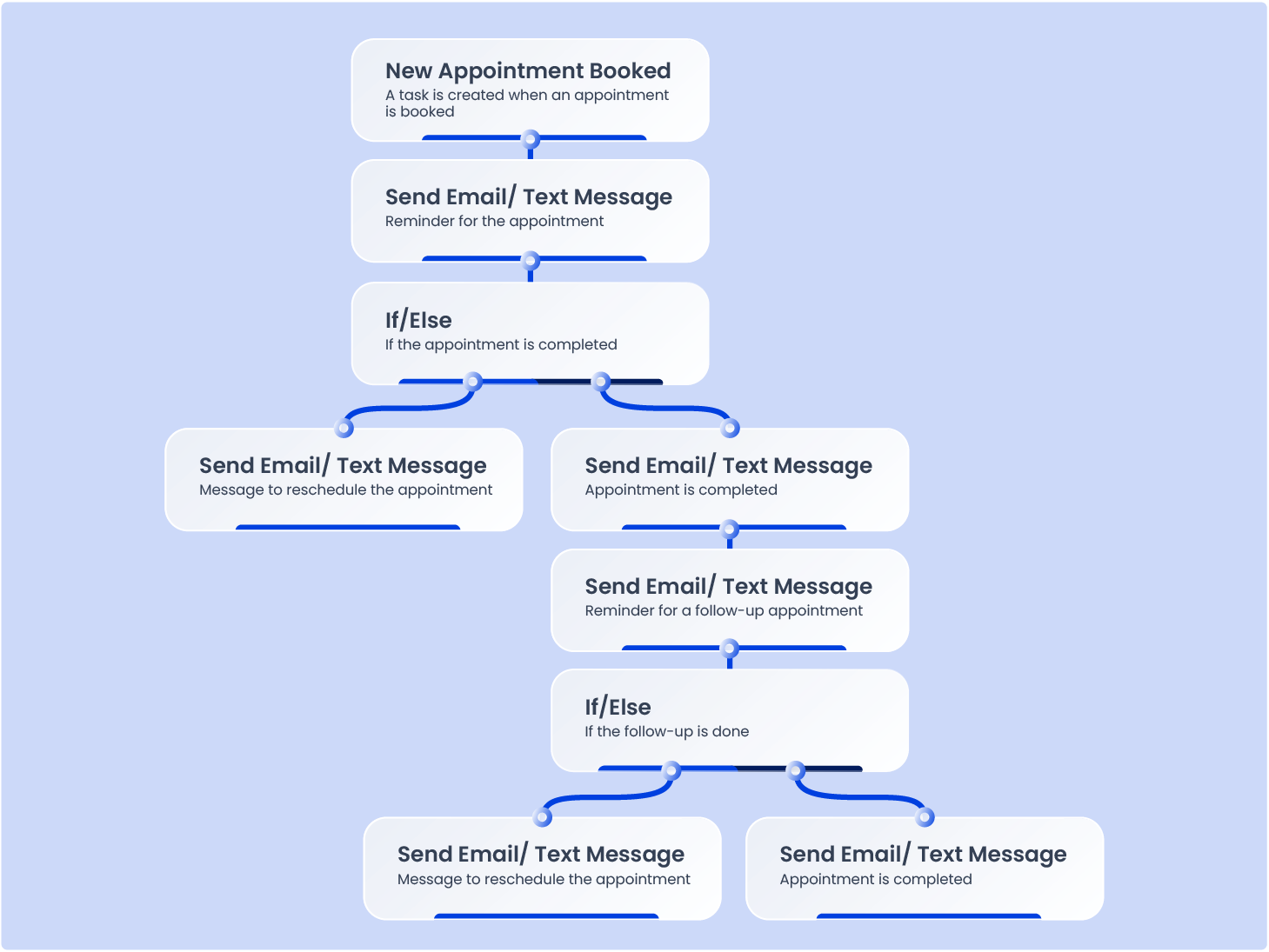
Automated communication can reduce dependency on the staff and help resolve inquiries faster. Regular interaction also improves patient engagement. Of course, it also saves your staff more time.
Hiring the right staff is challenging for most healthcare organizations. Also, once hired, you would like your staff to start as soon as possible. Instead, they end up spending their initial days filling out multiple forms and submitting various documents.
Introducing an online portal for your staff onboarding can save you time and improve efficiency. You can automate the document collection process and also store records digitally.
Similarly, your doctor’s onboarding process can also be automated to save them from the tedious form-filling process
Automating the process reduces onboarding time. Since you will have the documents stored digitally, your staff or doctors will not have to share them again and again. Having an automated onboarding process also improves the overall experience of the staff and doctors.
The healthcare industry runs 24/7 to ensure patients get the proper care. The staff works in shifts, and managing their activity and roster is an add-on task for the organization. The process can often be disrupted or delayed due to even a single person’s non-availability.
There are many staff scheduling systems available that can help you automate your employees’ schedules. They can also help you get approvals for your schedules and notify staff immediately.
You can also automate the distribution of tasks based on the roster. For example, automation will automatically distribute inquiries only to operational staff.
You can inform your staff about their schedule without confusion. You can reduce response time on inquiries through automation to improve overall team efficiency.
Healthcare organizations claim billions in insurance every year. The process requires collecting a large amount of information from patients and healthcare providers. Handling repetitive tasks, such as collecting patient data and managing claims, manually takes a lot of time and increases the chances of human errors.
You can automate the insurance claim process using RPA tools. The tool will collect and arrange all the data to file your claim.
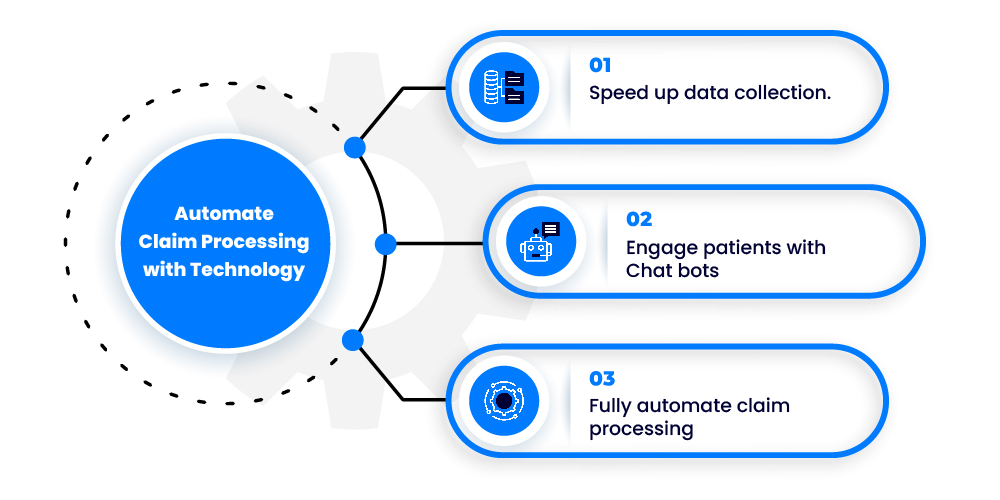
Automating insurance claim processes can boost efficiency and lead to a 40% reduction in documentation time. You can also mitigate any chance of human error and prevent potential financial losses.
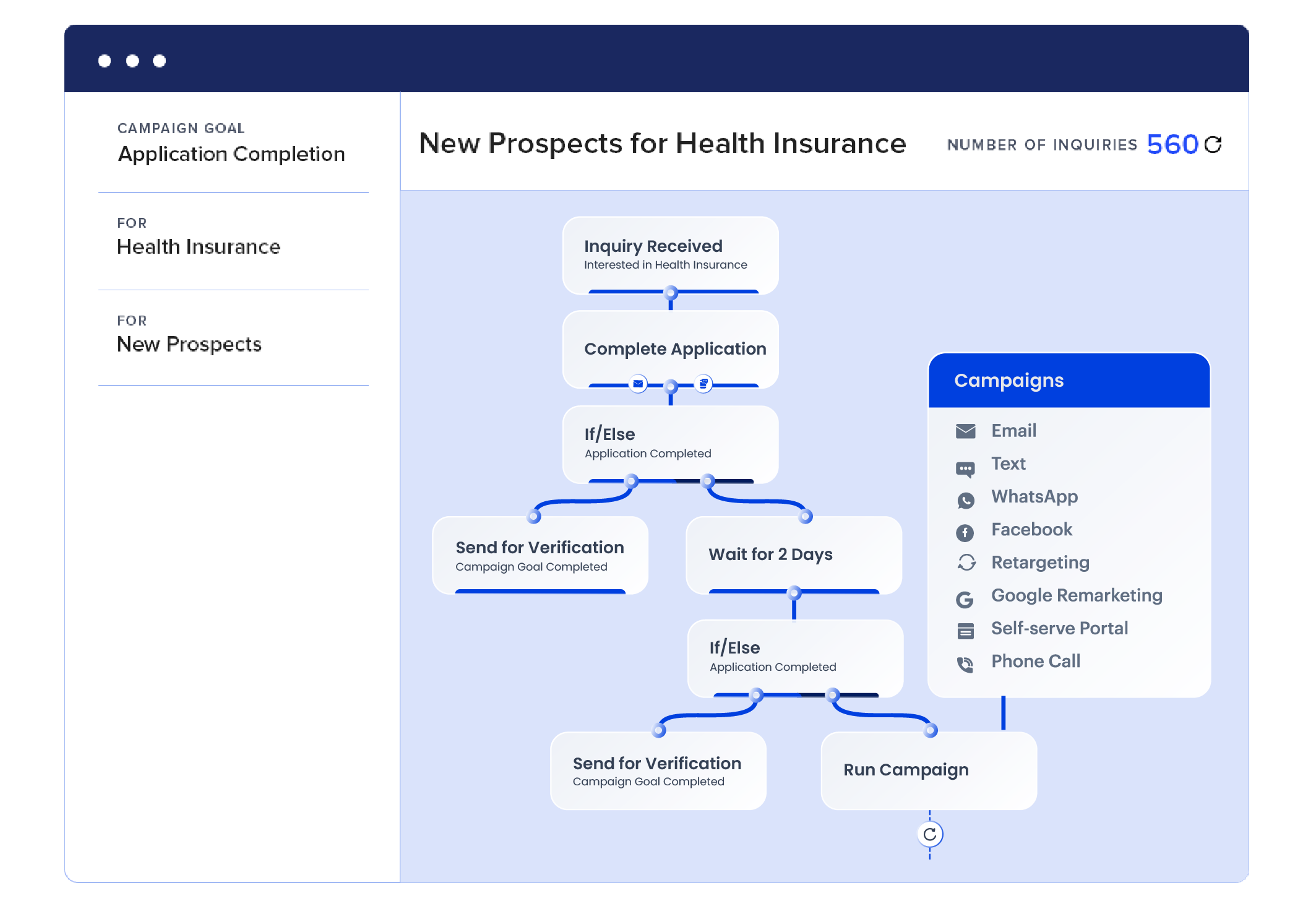
Workflow automation helps healthcare enterprises automate patient intake, communication, and many other workflows.
Implementing LeadSquared’s HIPAA-compliant healthcare CRM can help you improve:
You can assign tasks and notify your staff about new patient inquiries. Enable your teams to call, email, and message patients with LeadSquared’s healthcare CRM while complying with HIPAA guidelines.
The CRM also helps you create multiple journeys and workflows for teams and functions like physician onboarding, intake, marketing, and operations.
Increase patient intake by automatically capturing their inquiries and distributing them to the correct department for follow-ups. Collect records through digital intake forms and self-serve patient portals to simplify the intake process.
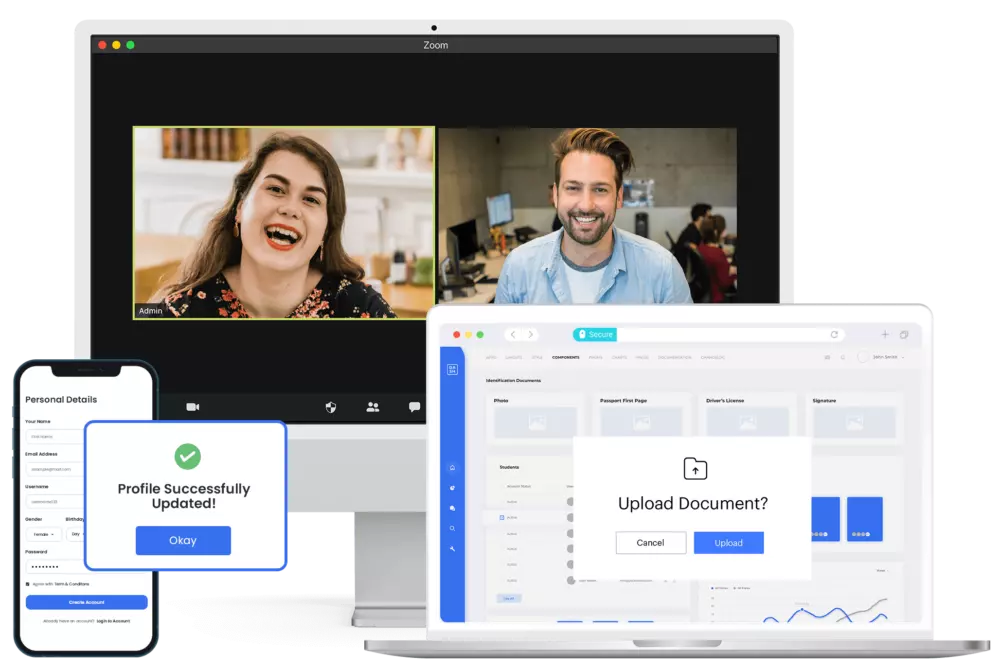
Utilize LeadSquared’s healthcare CRM platform to use autoresponders for web inquiries and built-in dialers.
Don’t just take our word for it. Hear it from the people who’ve been there, struggling with age-old methods and legacy systems — that is before automation came in offering them a helping hand out of the endless manual grind.
2x the patient volume, without the hassle
“Before, we could not get in contact with over 30% of patient leads. That number has reduced to under 5% now. We’re now handling over 2x the number than we did before automation existed.”
Bree Castillo, Chief Operating Officer at Tandem Care
Tandem Care, a non-medical home care provider, sends small teams of 2-3 caregivers to help clients with their daily living needs across neighborhoods. As they grew, their old CRM system became a problem. It lacked efficiency in automation, reporting, and customization, and they needed something HIPAA-compliant to manage health records.
That’s when they switched to LeadSquared. The platform addressed their key needs, helping them streamline their operations. With LeadSquared in place, their processes turned smoother, and caregivers became better equipped to do their jobs.
More customers, smoother sales
“We could not have scaled the way we did without LeadSquared’s automation. We were able to connect with more customers, streamline our sales, even improve our support and fulfillment processes. LeadSquared turned things around!”
Adi Mordechai, CTO and Co-Founder at Wesper
Before adopting LeadSquared, Wesper relied on spreadsheets to manage customer data and other processes. While this worked in the beginning, it became inefficient and unwieldy as the company grew. They needed a CRM that could bring all their customer data together, streamline communication, and help manage tasks more effectively.
That’s when LeadSquared entered the picture. With LeadSquared, Wesper was able to reach more customers, organize their sales process, and deliver personalized communication at every step of the customer journey. Beyond just sales and communication, LeadSquared also helped improve the efficiency of many other operational processes.
So, one team solved the puzzle of patient outreach; while another found a way to grow their healthcare enterprise without breaking a sweat. Common thread? The right automation system to cut through the complexities.
Workflow automation is a game-changer for healthcare organizations. It takes the hassle out of administrative work, freeing up your staff to perform at their best.
If you seek to cut down errors in your healthcare workflow and streamline it while creating a better experience for everyone involved, LeadSquared has you covered.
Why not see us in action? Book your demo today!
Healthcare automation systems, such as LeadSquared, can take over time-consuming, repetitive tasks, streamlining them across your hospital or clinic. For example, they can handle appointment reminders, patient follow-ups, and referral tracking without needing manual intervention. Instead of having staff manually enter patient records or update schedules, these tools can pull information from existing systems and keep everything updated automatically. This ensures tasks are completed more efficiently, reduces the risk of errors, and frees up your staff to focus on more critical tasks, ensuring better patient outcomes.
Not at all! Modern healthcare automation systems are built with user-friendliness in mind. These tools often come with intuitive dashboards, easy-to-follow workflows, and step-by-step guides. Onboarding typically includes training sessions and customer support to help your team get up to speed quickly. Plus, most systems are designed to mimic familiar processes, so even non-technical employees can adapt without feeling overwhelmed. With just a little time and practice, your administrative staff can become proficient and start seeing the benefits soon.
Yes—and that’s actually one of their biggest strengths. A well-designed healthcare workflow automation tool is built to connect seamlessly with the systems you already use, like electronic health records (EHRs), billing platforms, and scheduling tools. This kind of integration allows for real-time data flow between systems, meaning teams always have access to the latest information without needing to enter it twice.
For instance, if a patient’s status is updated in your EHR, an automation system like, LeadSquared’s healthcare CRM, can instantly trigger the next steps—such as sending a follow-up message or updating a referral status. These tools also act like a bridge between your disconnected systems, allowing them to “talk” to one another. This means a more coordinated experience for your staff and your patients.
Yes. These tools can enhance patient retention by ensuring timely, consistent, and personalized communication. For instance, they can send automated reminders for follow-up visits, health screenings, or treatment plans. They also enable you to create customized outreach campaigns, like sending reminders for wellness check-ups based on patient history. By making patients feel valued through consistent engagement, automation helps build trust, reducing the likelihood of them seeking care elsewhere.
While your staff may handle these administrative tasks well, automation can make their work significantly easier and more efficient. For example, instead of spending hours manually calling patients to confirm appointments, the system can send automated reminders via email, SMS, or calls. If a patient cancels, it can instantly notify the team and suggest rescheduling options. Automation reduces the chance of errors, saves time, and ensures no task is forgotten, enabling your staff to focus on high-priority, patient-centered tasks.
Yes, managing and growing referrals is a key use case for these systems. They help track referring physicians, monitor referral volumes, and even segment providers by specialty or location. With automation, you can send personalized messages or updates to referring providers, ensuring they feel appreciated and informed. For instance, if a referring doctor sends a significant number of patients, the system can alert your team to follow up with a thank-you note or a meeting. This consistent outreach strengthens relationships and encourages more referrals.
Compliance is a top priority for healthcare automation systems. These tools are built with strict data privacy and security measures to ensure compliance with regulations like HIPAA. Features like data encryption, access controls, and audit logs protect sensitive patient information. Automation systems like LeadSquared also conduct regular updates and compliance checks to align with the latest standards, so you can use the tools with confidence knowing your data is secure.
Absolutely. Healthcare automation systems typically come with powerful analytics and reporting tools that give you a clear picture of how your campaigns are performing. For example, if you’re running an outreach campaign to improve patient intake, the system can track how many patients completed their intake forms or scheduled appointments because of the campaign. This kind of data not only shows the immediate impact of your efforts but also helps identify any steps in the process where patients might be dropping off. With this insight, you can fine-tune your approach, address any bottlenecks, and ultimately make the intake process smoother and more efficient for both patients and staff.
Automation systems streamline patient communication by ensuring it’s timely, relevant, and personalized. Whether it’s sending reminders for an upcoming appointment, notifying patients about test results, or following up after a procedure, these tools get the job done. They can even tailor communication based on patient preferences, like sending SMS reminders for tech-savvy patients, typically youngsters, or phone calls for others. Automating patient communication also cuts down patient no-show rates significantly.
While there’s an upfront cost, automation systems are an investment that pays off over time. By reducing manual workloads, they help cut administrative costs and minimize errors, which can be costly. They also boost efficiency by streamlining work and play a huge role in improving patient satisfaction, leading to better financial outcomes. Plus, most tools offer flexible pricing based on your organization’s size and needs, so you can find a solution that fits your needs. With the ROI they generate, these tools quickly prove their value.
It’s the use of digital tools to take over routine, manual tasks in a healthcare setting—things like scheduling, patient intake, billing, or even internal communication. The goal is to make your healthcare organization’s day-to-day operations run more smoothly.
Automation takes over repetitive tasks like appointment reminders, patient follow-ups, and referral tracking, so staff don’t have to do them manually. It reduces errors and saves you time by connecting with your existing systems and keeping patient records and schedules updated automatically.
Automated healthcare workflows also help reduce mistakes that occur when tasks are handed off between staff members.
With these efficiencies, your hospital can treat more patients in less time and ease the strain on staff.
It helps in a few key ways. Patients can fill out forms online before visits, get reminders automatically, and even receive follow-up instructions through apps. That means less waiting and more consistent experience. It also helps staff respond more quickly, because they’re not bogged down by manual processes behind the scenes.
Quite a few, actually. Some common examples include patient intake, appointment scheduling, insurance verification, internal messaging, patient engagement, billing, and document handling. Even things like routing lab results or managing staff access to systems can be automated with the right tools.
Yes—if done using the right tool. Tools used for healthcare workflow automation are designed to meet strict security standards, including HIPAA compliance. Features like encryption, role-based access, and audit logs are built in to protect sensitive information and ensure only the right people have access.
Not necessarily. Many modern automation tools are designed to be easy to set up and manage, even without a full IT department. That said, having someone in-house who understands your systems—whether it’s an IT lead or a vendor partner—can make the rollout smoother.
That depends on your biggest pain points. A good starting place is any workflow that’s repetitive, time-consuming, and prone to errors—like patient intake, scheduling, or claims processing. From there, you can gradually build out as you get more comfortable.
Handling HIPAA-related patient requests like accessing, amending, or restricting their health records requires care. Setting up clear, repeatable protocols and automating them helps protect Patient Health Information (PHI) during the process.
For example, automation can trigger identity verification steps before sensitive information is released, reducing the risk of unauthorized access. It can also guide staff through evaluating requests—such as when a patient wants certain information withheld or flagged as confidential—so they can respond appropriately without missing important steps.
Having these processes built into your systems helps prevent mistakes or misuse.
No. Most automation in healthcare is meant to support staff, not replace them. It takes over repetitive tasks like data entry or appointment reminders—things that don’t require clinical judgment—so people can spend their time on higher-value work. It’s about making the job easier, not cutting people out.
Disasters like outages or cyberattacks can happen anytime, and in healthcare, losing access to patient data can seriously impact care and compliance. That’s why having automated data backup is crucial to ensure patient records are safely stored and always available.
Emergency mode lets your team keep working and access vital info even during disruptions. And disaster recovery helps you get back up and running quickly, minimizing downtime and protecting your reputation.
AI and machine learning are quietly transforming the healthcare landscape. They can now help clinicians diagnose faster and more accurately; like analyzing medical images to spot issues early or predicting diseases that someone is more prone to acquire by going through large sets of their patient data.
Beyond diagnosis, these technologies streamline admin tasks too. AI predicts inventory needs to prevent shortages, automates billing by catching errors and fraud, and optimizes patient scheduling to reduce wait times.
A good starting point is to look at everyday processes that slow the team down — things like writing patient details on paper forms, calling patients individually for reminders, manually entering appointment requests, or tracking follow-ups in notebooks or spreadsheets. Each of these steps can be digitized.
For example, instead of collecting patient information on paper, hospitals can use digital forms that patients fill out on their phone before visiting. Instead of staff calling patients one by one, automated reminders can go out through SMS or WhatsApp. Instead of manually assigning inquiries to departments, a digital tool can route them based on specialty, urgency, or insurance type.
The transition works best when hospitals bring all this activity onto one unified platform. A healthcare CRM like LeadSquared can act as this central workspace. It connects with existing tools — such as HIS, appointment systems, lab software, or TPA portals — and keeps patient data flowing automatically between them. When a patient books an appointment, fills out a form, uploads a document, or responds to a message, the CRM updates their record and triggers the next step without anyone re-entering information.
Hospitals don’t have to automate everything at once. Most start with one area — appointments, inquiries, or follow-ups — and expand as teams get comfortable. Over time, the shift reduces manual workload, improves accuracy, and keeps every patient interaction organized from first inquiry to discharge.
Hospitals typically rely on a core set of digital systems like EMRs, billing platforms, lab systems, radiology systems, and communication tools, so anything new must work well alongside these.
Systems that integrate well with hospital workflows usually include:
1. Electronic Medical Records (EMRs/EHRs)
These are the main clinical systems doctors and nurses use. Modern EMRs often support integrations through APIs, making it possible for new tools to exchange patient data, appointment details, prescriptions, and visit notes without manual entry.
2. Laboratory and Radiology Information Systems (LIS/RIS)
These systems handle diagnostics, reports, and imaging. Solutions that integrate well can pull lab results or radiology reports directly into a patient’s digital record, reducing delays and paperwork.
3. Billing and Hospital Information Systems (HIS)
These manage admissions, billing, insurance, and discharge workflows. Compatible systems can share data such as patient demographics, appointment outcomes, and financial information.
4. Call-center and communication platforms
Hospitals increasingly use cloud telephony, WhatsApp, SMS, and chat platforms. Good integrations help connect patient inquiries and communication history with their records.
5. Healthcare CRMs (like LeadSquared)
A CRM sits on top of many existing workflows. It connects with EMRs, call systems, websites, marketing channels, and billing platforms. Because it’s designed to link multiple tools, it supports smoother transitions, reduces duplicate data entry, and adds automation without changing how doctors or nurses already work.
6. Telehealth and patient-engagement tools
Video consult apps, patient apps, and self-booking tools integrate best when they can sync appointments, reminders, and visit outcomes with the main hospital systems.
Overall, systems that offer clear APIs, ready connectors, and flexible workflows tend to integrate most smoothly with hospital workflows.
Automating patient inquiry capture from multiple channels means making sure every question, message, or request from a prospective patient gets collected automatically in one place. Whether someone reaches out via your website, WhatsApp, phone call, social media, chat, or a referral, all inquiries are captured without staff having to enter the details manually.
The first step is connecting all these channels to a central digital platform, which can be a healthcare CRM such as LeadSquared. Website forms, social media lead ads, WhatsApp messages, SMS, and call center logs can all feed directly into this platform. This ensures no patient data is missed and removes the need for healthcare teams to check multiple apps or spreadsheets.
Next, the digital platform can organize each inquiry into a structured patient record. Every lead includes details like the patient’s name, contact, service they are interested in, and how they reached out. Structured records prevent duplicates and make it easy to track each patient’s journey.
Automation can also route inquiries automatically to the right department or staff member. For example, cardiology-related questions go to the heart care team, while general OPD queries go to front-desk coordinators. Alerts and reminders ensure staff respond quickly, which helps convert interest into appointments.
The platform can even send forms or confirmation messages automatically. When a patient submits an inquiry, they receive intake forms via WhatsApp, SMS, or email, and their completed responses attach directly to their records.
A healthcare CRM like LeadSquared brings all of this together. It can capture inquiries from all channels, organize them into unified patient records, and more.